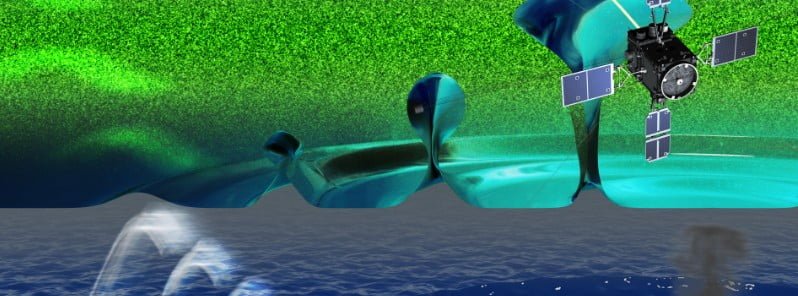Hunga Tonga–Hunga Haʻapai volcano eruption triggered unprecedented ionospheric disturbances

An international team of scientists revealed that the massive eruption of the underwater Hunga Tonga–Hunga Haʻapai volcano in Tonga on January 15, 2022, disrupted satellite signals across the globe. The team used satellite- and ground-based ionospheric observations to demonstrate that an air pressure wave triggered by the volcanic eruption could produce an equatorial plasma bubble in the ionosphere, severely affecting satellite-based communications.
The eruption of the underwater volcano in Tonga was found to disrupt satellite signals halfway around the world. An international team of scientists used both satellite and ground-based ionospheric observations to show that an air pressure wave triggered by the volcanic eruptions could produce an equatorial plasma bubble (EPB) in the ionosphere, severely disrupting satellite-based communications. The findings were published in the journal Scientific Reports.
The ionosphere is the region of the Earth’s upper atmosphere where molecules and atoms are ionized by solar radiation, creating positively charged ions. The area with the highest concentration of ionized particles, the F-region, plays a crucial role in long-distance radio communication, reflecting and refracting radio waves used by satellite and GPS tracking systems back to the Earth’s surface. However, irregularities in the F-region, such as the movement of plasma, electric fields, and neutral winds, can cause the formation of a localized irregularity of enhanced plasma density, creating a bubble-like structure called an EPB. EPB can delay radio waves and degrade the performance of GPS.
The team, led by Designated Assistant Professor Atsuki Shinbori and Professor Yoshizumi Miyoshi of the Institute for Space–Earth Environmental Research (ISEE), Nagoya University, in collaboration with various institutions, used the Arase satellite to detect EPB occurrences, the Himawari-8 satellite to check the initial arrival of air pressure waves, and ground-based ionospheric observations to track the motion of the ionosphere. They observed an irregular structure of the electron density across the equator that occurred after the arrival of pressure waves generated by the volcanic eruption.
The group also made a surprising discovery. For the first time, they showed that ionospheric fluctuations start a few minutes to a few hours earlier than the atmospheric pressure waves involved in the generation of plasma bubbles. This suggests that the long-held model of geosphere-atmosphere-cosmosphere coupling, which states that ionospheric disturbances only happen after the eruption, needs revision.
Furthermore, they found that the EPB extended much further than predicted by the standard models. This discovery suggests that we should pay attention to the connection between the ionosphere and the cosmosphere when extreme natural phenomena, such as the Tonga event, occur.
The results of this research are significant not only from a scientific point of view but also from the point of view of space weather and disaster prevention.
The Tonga volcano eruption was the biggest submarine eruption in history.
The eruption took place around 65 km (40 miles) from Tonga’s main island, causing tsunamis felt as far away as Russia, the United States, and Chile. The waves claimed six lives, including two people in Peru, 10 000 km (6 200 miles) away.
An analysis published recently in Science showed this eruption created the highest volcanic cloud ever recorded, marking the first time a volcanic plume has been seen to penetrate the stratopause.
References:
1 Generation of equatorial plasma bubble after the 2022 Tonga volcanic eruption – Atsuki Shinbori et al. – Scientific Reports – May 22, 2023 – DOI: 10.1038/s41598-023-33603-3 – OPEN ACCESS
2 Eruption of Tonga underwater volcano found to disrupt satellite signals halfway around the world – Nagoya University – May 23, 2023
3 Hunga Tonga–Hunga Haʻapai eruption created the highest volcanic cloud ever recorded – The Watchers – November 6, 2022
Featured image credit: ERG science center

Commenting rules and guidelines
We value the thoughts and opinions of our readers and welcome healthy discussions on our website. In order to maintain a respectful and positive community, we ask that all commenters follow these rules.